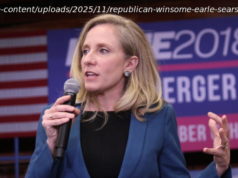While free trade is often upheld as an ideal for international relationships, there are a few reasons why it might be smart to impose tariffs.
President Donald Trump on Thursday announced new tariffs to be imposed on steel and aluminum imports, and there’s been a wide swath of reactions to the news.
But what exactly are tariffs anyway — and how do they square with Trump’s criticism of international trade deals on the campaign trail and in the White House?
Basically, a tariff is just a tax on imports. As industries trade internationally, goods and services go out (exports) and come in (imports) to a nation, and tariffs are one way that countries can regulate trade practices and manage domestic economies.
While free trade is often upheld as an ideal for international relationships, there are a few reasons why it might be smart to impose tariffs:
Safeguarding domestic employment: According to Investopedia.com, tariffs are often used to make products produced by foreign countries more expensive so that locally made items get a boost to beat out foreign competitors.
Let’s say there’s a big U. S. company that makes doohickeys. But Japan starts exporting its cheaper doohickeys to the U. S. so that the American company can no longer compete. It starts laying off employees and moves operations overseas where production costs are less.
By placing tariffs on foreign doohickeys, Japan is forced to increase the price of their product to pay off the taxes, and the U. S. company can compete while benefitting domestic employment and the economy.
Looking out for the consumer: Tariffs can also be used to limit imports of products that may be dangerous for that country’s population.
For instance, if thingamabobs from Russia have been found to be a health hazard for U. S. citizens, then tariffs.
Infant industries: Developing economies often use tariffs to promote the growth of domestic industries. Rather than push out local companies with cheaper products from more advanced nations, a growing country can use tariffs while it builds a more robust, industrialized economy focusing on finished goods.
In short, trying to get your young country and businesses to develop and compete in the world marketplace? Tariffs.
National security: Defense industries and producers of military equipment are often under barriers for foreign trade. After all, most companies aren’t too keen on giving their own defensive technology to foreign powers.
So, you have whatchamacallits that’ll help your army and you want to keep them to yourself? Tariffs.
Retribution: Finally, if a trading partner refuses to follow trade agreements or threatens foreign policy objectives, tariffs can be used simply as a form of retaliation to harm foreign markets and coerce cooperation.
Another country got you down on policy issues? You guessed it. Tariffs.
Throughout the campaign trail and into the White House, Trump has argued that U. S. involvement in international trade deals must be renegotiated. He has continuously slammed trade deficits with China and other countries and has often signaled his intent to withdraw the U. S. from major trade agreements.
But it was still quite the surprise when Trump announced a 25 percent tariff on steel imports and 10 percent for aluminum — to be signed and implemented next week. Few details have emerged about the plan, leaving investors and economists in the dark about what to expect. As a result, the U. S. stock market has plummeted.
During a press briefing on Thursday, press secretary Sarah Huckabee Sanders hailed the new tariffs as a fulfillment of the president’s campaign promises to revive struggling U. S. industries and bring back manufacturing jobs (a.k.a. protecting domestic employment).
The president himself has voiced these objectives in recent days, as well as a healthy dose of antagonism directed at foreign countries he sees as participating in unfair trade with the U. S.:
So Trump wants trade policies that promote U. S. businesses and fairness. Makes sense. The only problem is that some economists doubt that tariffs will accomplish either of those goals.
The announcement of the steel and aluminum tariffs threw businesses and world leaders for a loop. And the lack of details on the plan doesn’t help, either.
Of particular concern is whether some countries will be exempted from the tariffs, like Canada, whose prime minister, Justin Trudeau, cited a U. S. trade surplus of $2 billion on steel with Canada in his reasoning for calling the tariffs “unacceptable,” according to Reuters.
Tariffs on less amiable countries threaten to ignite a trade war, in which China or other trade partners impose tariffs of their own to harm the U. S. economy as a response (hint: retaliation).
Additionally, other experts have pointed out that tariffs could cause prices to rise for steel and aluminum goods in the U. S., harming more consumers than it would benefit domestic producers:
Of course, despite all the doomsayers, the manufacturing sector could see a significant boost, benefitting employees in the steel and aluminum industry. And that seems to be the president’s primary focus.
The question that remains is whether the repercussions of a protectionist policy will outweigh the benefits and until more information about the new tariffs emerges, the answer will be unclear.






